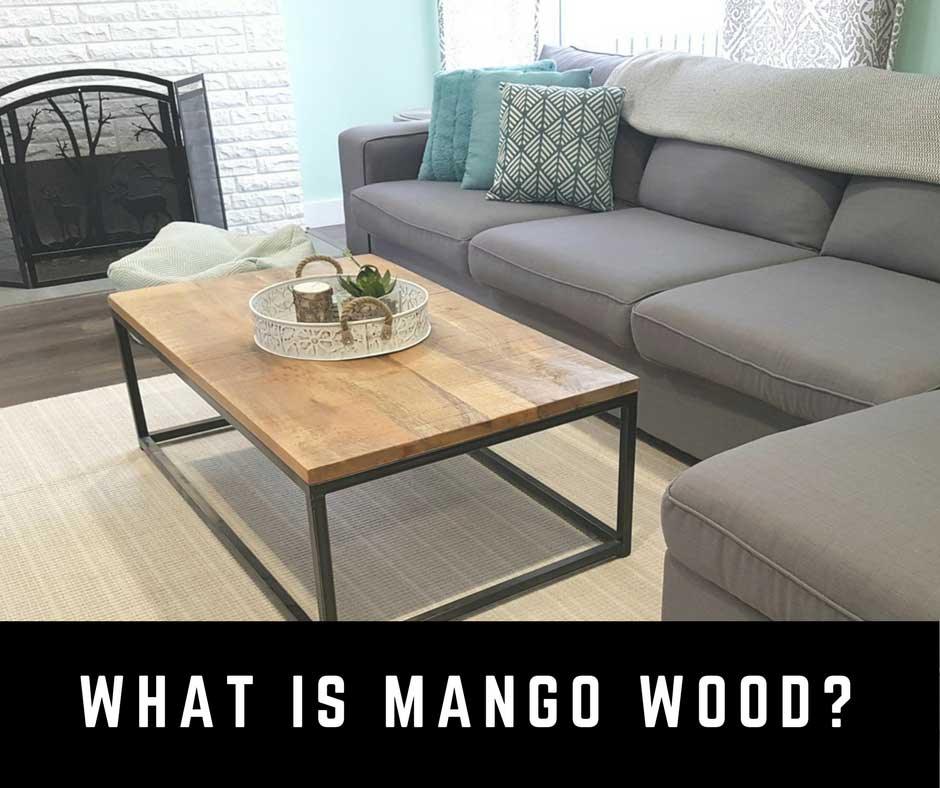
What is Mango wood?
Share
In recent years, there’s been an increase in global awareness with regards to the need for new sustainable practices for the food and waste industry. In the same light, there’s also been increasing pressure on the furniture industry as traditional woods like Maple or Oak are becoming increasingly expensive.
It’s the main reason why you’ve likely seen exotic alternatives like Acacia wood and Sheesham (more commonly known as Rosewood). In this article, we’ll take a closer look at Mango wood, its properties and why this is a great option if you’re in the market for sustainable furniture.

Where does the mango tree grow?
The mango originated from countries in the southern asia region, mostly India. In fact, it’s the national fruit to several countries in the area, like India, Pakistan and even the Philippines. The ideal climate for mango trees is tropical, and even subtropical, meaning these trees need year-round heat and humidity. These high levels of humidity create optimal conditions for a special fungus that is responsible for giving mango wood its one-of-a-kind array of beautiful colors (formerly referred to as “spalting”, ranging from deep brown, to green and sometimes even pink.
The mango wood market was created thanks to the increased demand for the mango fruit itself. When a tree reaches majority and can no longer produce an adequate quality of fruits, growers cut them down. In the past, the discarded wood was used for firewood, but recent years have given it a second life as beautiful exotic wood furniture.
Using mango wood for furniture

The natural properties of mango wood make it an ideal candidate for building furniture. It is heavy, dense and quite strong, which means it can sustain the weight necessary for building tables, chairs and bookcases to name a few. It’s also considered “water-resistant” thanks to its tropical origins, so it will stand the test of time outdoors, or in a kitchen or bathroom.
Mango wood has a uniquely fine grain, which creates beautiful textures and patterns. You’ll see many manufacturers enhance those patterns with stains and the wood finishes extremely well.
How to care for and maintain mango wood
Thanks to its origins in tropical, humid climates, mango wood stands up pretty well to humidity and moisture, meaning it shouldn’t have the tendency to warp over time. If you live in colder or dryer climates, you may need to help it retain moisture once or twice a year by applying an appropriate wood oil if the piece of furniture has not been sealed.
In general, we recommend you simply dust your mango wood furniture with a dry microfiber cloth.
Here are 10 tips for taking care of mango wood furniture:
- Clean Regularly: Clean mango wood furniture regularly with a soft cloth and a mild soap solution. Avoid using abrasive cleaners or harsh chemicals, as these can damage the wood.
- Dust Regularly: Dust your mango wood furniture regularly to prevent buildup of dirt and grime that can cause scratches and stains.
- Avoid Exposure to Direct Sunlight: Mango wood furniture is susceptible to fading and discoloration when exposed to direct sunlight. Place your furniture away from windows or use blinds or curtains to protect it.
- Keep Away from Moisture: Mango wood is vulnerable to moisture and can crack or warp if exposed to high humidity levels. Avoid placing furniture near sources of moisture, such as sinks or shower stalls.
- Use Coasters and Place Mats: Use coasters and place mats when placing drinks or hot dishes on mango wood furniture. This will prevent rings and stains from forming on the wood surface.
- Store Properly During Winter Months: During the winter months, store mango wood furniture in a dry, warm place where it won't be exposed to changes in temperature and humidity.
- Use a Humidifier: Use a humidifier to maintain a constant level of humidity in your home, especially during the winter months. This will help prevent the wood from cracking or warping.
- Apply Oil or Wax Regularly: Apply a thin coat of oil or wax to mango wood furniture regularly to protect the surface and keep it looking fresh.
- Avoid Scratching: Use felt pads on the bottom of chairs, tables and other furniture to prevent scratching the wood surface.
- Repair Any Damage Promptly: If you notice any scratches or chips in the mango wood, repair them promptly to prevent further damage. Sand down the area gently with fine sandpaper and apply a touch-up kit to restore the finish.
It’s so easy to fall in love with the beautiful grain patterns and texture that mango wood can offer. And if that wasn’t enough, purchasing mango wood furniture helps out the planet and its people by providing growers an additional source of income for mango trees that would otherwise be disposed of, and prevents industrial deforestation of other, slower growing trees. In my book, that’s a win-win-win!

Isabelle Blondin is our resident Interior Designer at Rustic Furniture Outlet. Backed by an Interior Design degree from LaSalle College in Montréal, Québec and a passion for design, her tips and tricks will set you on the right track to creating a beautiful space. Follow our blog to for her weekly insights, and feel free to comment or ask questions! We'd love to hear from you!
